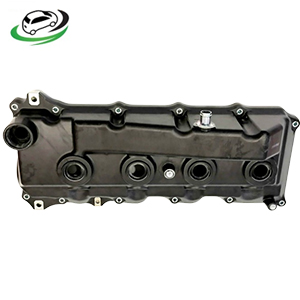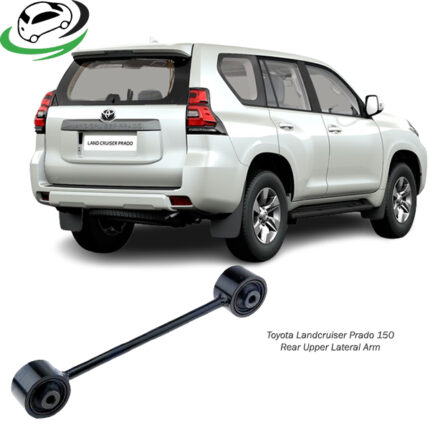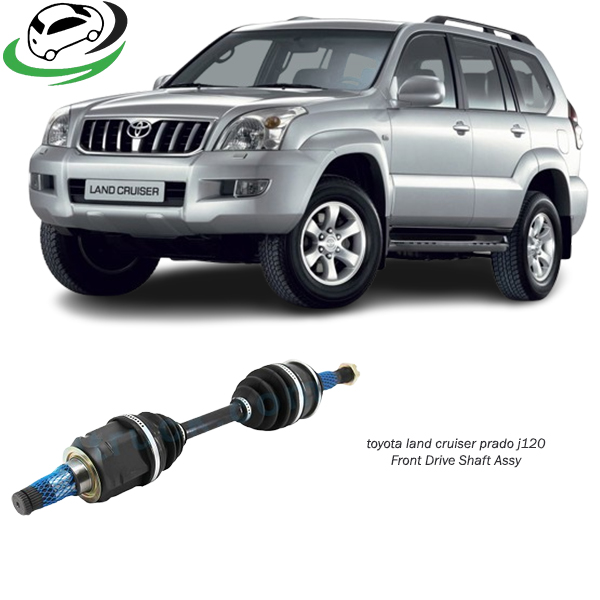-11%
Get Toyota Land Cruiser Prado J120 Front Drive Shaft Assy 43430-60060 in Kenya
The front drive shaft assembly, also known as the front axle drive shaft or front propeller shaft, is a critical component in vehicles with four-wheel drive (4WD) or all-wheel drive (AWD) systems. Its primary role is to transfer torque from the transmission or transfer case to the front wheels, allowing power to reach all four wheels when needed. This ensures improved traction, stability, and handling, especially in off-road or low-traction environments. Understanding the design, function, benefits, common issues, and maintenance of the front drive shaft assembly is crucial for appreciating its impact on a vehicle’s performance and longevity.
1. Structure and Components of the Front Drive Shaft Assembly
The front drive shaft assembly is a complex unit designed to handle the transmission of rotational force while accommodating the vehicle’s movement and suspension flex. Here are its key components:
- Drive Shaft (Shaft Tube): The main tube or body of the drive shaft that transmits torque. It’s typically made from steel, aluminum, or carbon fiber, combining strength and lightweight properties.
- Universal Joints (U-Joints): Located at each end of the drive shaft, U-joints allow the drive shaft to flex with the movement of the suspension. They facilitate rotational motion while compensating for slight misalignments between the transmission and the front differential.
- Constant Velocity (CV) Joints: In some vehicles, particularly those with independent suspension systems, CV joints are used instead of U-joints. CV joints ensure smooth torque transmission at different angles and provide greater flexibility in various driving conditions.
- Slip Yoke: This component allows for slight length adjustments of the drive shaft, accommodating the movement of the suspension. It also connects the drive shaft to the transfer case, enabling torque transfer.
- Differential Coupling Flange: The flange at the end of the drive shaft that connects to the differential. This component is crucial in ensuring the torque reaches the front wheels.
Each of these parts works in harmony to deliver power efficiently from the engine to the wheels, accommodating changes in vehicle alignment and suspension.
2. Function of the Front Drive Shaft Assembly
The primary role of the front drive shaft assembly is to transmit rotational force, or torque, from the transfer case to the front differential, which then distributes power to the front wheels. Here’s a breakdown of its main functions:
a. Torque Transmission
In 4WD or AWD systems, the drive shaft carries torque from the engine to the front wheels through the transmission and differential. This transfer of power to both axles improves traction and enhances the vehicle’s ability to maneuver on slippery or uneven surfaces.
b. Support for Off-Road and Low-Traction Environments
The drive shaft enables power distribution to the front wheels, giving the vehicle better control and stability when driving off-road or in low-traction conditions, like snow, mud, or sand. By powering all four wheels, it helps prevent the wheels from spinning out and allows the vehicle to maintain forward momentum.
c. Accommodating Suspension Flex
The U-joints and slip yoke in the drive shaft assembly allow it to flex with the vehicle’s suspension, maintaining torque transmission even as the vehicle moves over bumps and uneven terrain. This flexibility ensures a smooth ride without sacrificing control or power.
d. Ensuring Smooth Steering and Handling
By distributing power to the front wheels, the drive shaft assembly contributes to improved steering and handling. In AWD vehicles, it enhances cornering stability, providing drivers with better control on challenging terrain or in adverse weather conditions.
3. Benefits of a High-Quality Front Drive Shaft Assembly
A well-maintained and high-quality front drive shaft assembly brings several benefits to a 4WD or AWD vehicle, enhancing both performance and safety.
a. Improved Traction and Stability
By sending power to both the front and rear wheels, the front drive shaft assembly helps improve traction on low-traction surfaces. This added traction minimizes the chances of wheel slippage and helps maintain control in challenging driving conditions.
b. Enhanced Off-Road Capability
For vehicles that are driven off-road, a high-quality drive shaft assembly is essential. It enables the vehicle to climb steep hills, navigate rocky terrain, and power through mud and sand. The robust design of the drive shaft withstands the stresses of off-road driving, making it a critical component for adventure seekers and work vehicles alike.
c. Better Handling and Stability
In AWD vehicles, a front drive shaft assembly ensures that torque is evenly distributed to all four wheels, enhancing stability during cornering and acceleration. This provides a more balanced and controlled driving experience, particularly on slippery or uneven surfaces.
d. Durability and Longevity
High-quality drive shafts and components, like U-joints and CV joints, are built to withstand substantial torque and frequent suspension movement. Using high-grade materials ensures longevity and reduces the likelihood of premature wear or failure.
4. Common Issues with the Front Drive Shaft Assembly
Over time, the front drive shaft assembly can experience wear and develop issues that affect its functionality. Being aware of these common issues helps drivers identify problems early and seek timely repairs:
a. Worn or Damaged U-Joints
U-joints are prone to wear because they undergo constant motion and handle high levels of torque. Symptoms of worn U-joints include clunking noises when shifting gears, vibrations at higher speeds, and limited flexibility in the drive shaft.
b. Damaged or Leaking CV Joints
In vehicles with CV joints, torn or damaged rubber boots can lead to grease leaks and contamination. This exposure to dirt and moisture results in wear on the CV joint, leading to a popping or clicking sound, particularly when turning.
c. Vibrations at Higher Speeds
Drive shaft vibration is often a sign of imbalance or misalignment. Damaged U-joints or CV joints, as well as worn bearings, can cause vibrations. Ignoring this issue can lead to further damage to the drive shaft and other drivetrain components.
d. Worn Slip Yoke
A damaged or worn slip yoke can cause clunking sounds or binding sensations as the suspension moves. This component requires lubrication and inspection to prevent excessive wear and ensure smooth operation.
e. Rust and Corrosion
Rust and corrosion can weaken the drive shaft assembly, particularly in areas exposed to moisture and road salt. Over time, corrosion can cause the drive shaft to weaken, leading to potential failure if not addressed.
5. Maintenance and Replacement Tips for the Front Drive Shaft Assembly
Proper maintenance and timely replacement of the front drive shaft assembly and its components are essential for extending the vehicle’s lifespan and ensuring safe operation.
a. Regular Inspection
Inspect the drive shaft assembly during routine maintenance checks. Look for signs of wear on the U-joints, CV joints, and slip yoke. Additionally, check for any damage to the CV boot, as even small tears can allow contaminants into the joint.
b. Lubrication of U-Joints
Some U-joints come with grease fittings and require periodic lubrication to reduce wear. Greasing the U-joints helps ensure smooth motion and prolongs their lifespan. Always use the recommended type of grease for optimal results.
c. Monitor for Vibrations
If you feel unusual vibrations, especially when accelerating or driving at high speeds, it may indicate an issue with the drive shaft assembly. Promptly addressing vibrations can prevent further damage and costly repairs.
d. Replace Damaged Components Promptly
If any part of the drive shaft assembly, such as the U-joints or CV joints, shows signs of wear, it’s essential to replace them promptly. Worn or damaged components place additional strain on the assembly and can lead to further issues if not addressed.
e. Professional Installation for Replacement
Due to the complexity and precision required, it’s recommended to have the front drive shaft assembly installed or repaired by a professional. Proper alignment and balance are crucial for the drive shaft’s function and longevity.
Conclusion
The front drive shaft assembly is an indispensable part of the drivetrain in 4WD and AWD vehicles. Its ability to transfer power to the front wheels enhances traction, stability, and handling, making it an essential component for off-road and all-weather performance. Regular maintenance, such as lubrication and inspection, is key to ensuring the drive shaft’s durability. Recognizing symptoms of wear, such as unusual vibrations or clunking sounds, allows drivers to address issues early, extending the lifespan of the drive shaft assembly and preserving vehicle performance. Investing in quality parts and professional installation further guarantees that the front drive shaft assembly will support safe, smooth, and reliable operation over time.
Follow us on Facebook for more parts.



